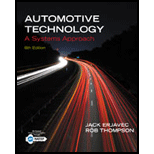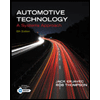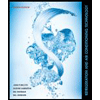
Automotive Technology: A Systems Approach (MindTap Course List)
6th Edition
ISBN: 9781133612315
Author: Jack Erjavec, Rob Thompson
Publisher: Cengage Learning
expand_more
expand_more
format_list_bulleted
Concept explainers
Textbook Question
Chapter 24, Problem 4RQ
Explain the trip and drive cycle in an OBD II system.
Expert Solution & Answer
Trending nowThis is a popular solution!

Students have asked these similar questions
What is limitation of supercharging?
What is the primary difference between an automatic traction control system and a stability control system ?
Explain the mechanism of an autopilot?
how does autopilot functions work?
Chapter 24 Solutions
Automotive Technology: A Systems Approach (MindTap Course List)
Ch. 24 - Describe the difference between an open- and a...Ch. 24 - Explain the use and importance of system strategy...Ch. 24 - Describe an OBD II warm-up cycle.Ch. 24 - Explain the trip and drive cycle in an OBD II...Ch. 24 - Describe how engine misfire is detected in an OBD...Ch. 24 - Describe the purpose of having both upstream and...Ch. 24 - Briefly describe the monitors in an OBD II system.Ch. 24 - Type B engine misfires are excessive if the...Ch. 24 - The monitor system checks the action of the can...Ch. 24 - The monitor system has a(n) and test to check the...
Ch. 24 - The fuel monitor checks fuel trim and fuel trim.Ch. 24 - Which sensor is used for misfire monitoring on OBD...Ch. 24 - Which of the following statements is not true?...Ch. 24 - A computer is capable of doing all of the...Ch. 24 - Which of the following memory circuits is used to...Ch. 24 - Technician A says that the oxygen sensor provides...Ch. 24 - While discussing OBD II systems: Technician A says...Ch. 24 - While discussing the catalyst efficiency monitor:...Ch. 24 - While discussing monitoring systems: Technician A...Ch. 24 - While discussing the comprehensive monitoring...Ch. 24 - Prob. 6ASRQCh. 24 - While discussing diagnostic procedures: Technician...Ch. 24 - Technician A says that the enable criteria are the...Ch. 24 - While discussing PCM monitor tests: Technician A...Ch. 24 - While discussing the misfire monitor: Technician A...
Knowledge Booster
Learn more about
Need a deep-dive on the concept behind this application? Look no further. Learn more about this topic, mechanical-engineering and related others by exploring similar questions and additional content below.Similar questions
- Explain FIVE (5) advantages of a mechatronic system over conventional system in consumer products.arrow_forward2) Explain the in detail control system for steam supply to the engine of centrifugal Watts’Governor with block diagram and justify it as closed loop system.arrow_forwardGive me pictures of the control systems mentioned in micro air vehicle 1. Using a wireless remote control 2. Camera Control (Video Base) 3. The use of the autopilot systemarrow_forward
- The Prius PHEV offers many advantages over the basic Prius, how is that possible?arrow_forwardQuestion: What controls the instroke of a Single-Acting Cylinder? Note: -NO PLAGIARISM PLEASE. -200 words or more.arrow_forwardWhy is it better to use an automatic system rather than a manual one?arrow_forward
arrow_back_ios
SEE MORE QUESTIONS
arrow_forward_ios
Recommended textbooks for you
 Automotive Technology: A Systems Approach (MindTa...Mechanical EngineeringISBN:9781133612315Author:Jack Erjavec, Rob ThompsonPublisher:Cengage Learning
Automotive Technology: A Systems Approach (MindTa...Mechanical EngineeringISBN:9781133612315Author:Jack Erjavec, Rob ThompsonPublisher:Cengage Learning Refrigeration and Air Conditioning Technology (Mi...Mechanical EngineeringISBN:9781305578296Author:John Tomczyk, Eugene Silberstein, Bill Whitman, Bill JohnsonPublisher:Cengage Learning
Refrigeration and Air Conditioning Technology (Mi...Mechanical EngineeringISBN:9781305578296Author:John Tomczyk, Eugene Silberstein, Bill Whitman, Bill JohnsonPublisher:Cengage Learning

Automotive Technology: A Systems Approach (MindTa...
Mechanical Engineering
ISBN:9781133612315
Author:Jack Erjavec, Rob Thompson
Publisher:Cengage Learning

Refrigeration and Air Conditioning Technology (Mi...
Mechanical Engineering
ISBN:9781305578296
Author:John Tomczyk, Eugene Silberstein, Bill Whitman, Bill Johnson
Publisher:Cengage Learning
Power Transmission; Author: Terry Brown Mechanical Engineering;https://www.youtube.com/watch?v=YVm4LNVp1vA;License: Standard Youtube License